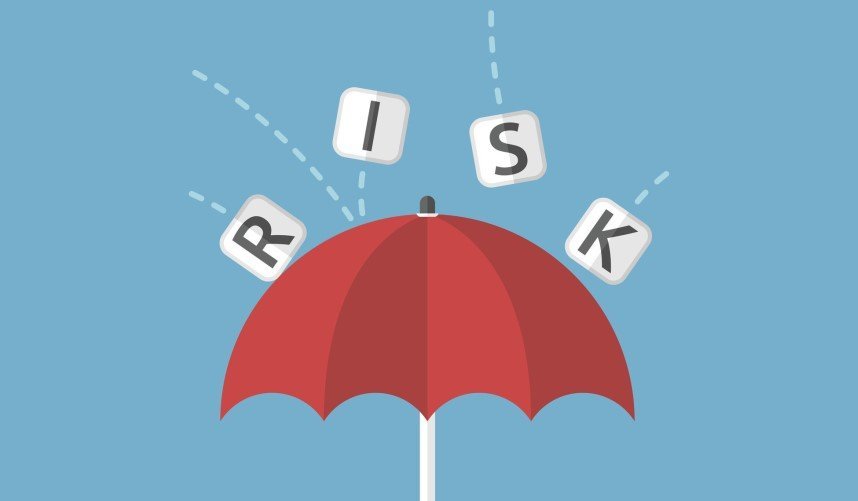Project Risk Management: A Comprehensive Guide

Project risk management is a critical component of effective project management. As organizations embark on complex projects with numerous moving parts, the ability to anticipate, assess, and mitigate risks can make the difference between project success and failure. Risk management involves identifying potential risks, analyzing their impact, and developing strategies to minimize or eliminate their effect on project objectives.
In this article, we will explore the essentials of project risk management, covering the importance of risk management, the key steps involved, and best practices to help organizations manage risks effectively.
What is Project Risk Management?
Risk management is the process of identifying, assessing, and responding to potential risks that could negatively impact a project’s outcome. Risks can come from various sources, such as external factors (economic changes, regulatory shifts) or internal factors (resource limitations, technical challenges). Proper risk management allows project teams to minimize the likelihood of these risks occurring and mitigate their impact when they do.
Why Project Risk Management Is Important
Effective risk management ensures:
- Increased project success rates: By anticipating potential challenges, teams can devise strategies to mitigate issues before they become roadblocks.
- Better decision-making: Understanding risks enables better decisions based on data rather than assumptions.
- Cost and time savings: Addressing risks early can prevent project delays and costly overruns.
- Improved stakeholder confidence: Demonstrating a strong risk management plan reassures stakeholders that the project is under control.
Key Types of Risks in Project Management
Risks in projects can be categorized based on their nature. Here are the most common types:
1. Strategic Risks
These risks affect the alignment of the project with the organization’s strategic goals. Examples include changes in business strategy, shifting priorities, or the introduction of competing projects.
2. Operational Risks
Operational risks relate to the day-to-day activities that could disrupt project progress, such as inadequate resources, technical failures, or poor communication.
3. Financial Risks
These are risks that affect the project’s budget. Examples include cost overruns, inflation, exchange rate fluctuations, or sudden increases in material costs.
4. Legal and Compliance Risks
These risks arise from changes in regulations, legal challenges, or failing to meet compliance requirements. These can result in fines, delays, or project termination.
5. Environmental Risks
These are external factors such as natural disasters, political instability, or global pandemics that could affect project timelines or costs.
The Project Risk Management Process
The process of risk management in a project involves several key steps, each contributing to minimizing the impact of risks on project objectives.
1. Risk Identification
The first step in managing risks is to identify them. This involves brainstorming potential risks that could arise during the project lifecycle. Tools like SWOT analysis (Strengths, Weaknesses, Opportunities, and Threats), expert interviews, and risk checklists can be useful in this phase.
- Examples of Risk Identification Techniques:
- SWOT Analysis: This tool helps to identify internal and external risks by examining the project’s strengths, weaknesses, opportunities, and threats.
- Risk Breakdown Structure (RBS): RBS categorizes risks into different levels, such as technical risks, external risks, and organizational risks.
2. Risk Assessment
Once risks are identified, the next step is to assess their potential impact and likelihood. This helps prioritize which risks need to be addressed immediately and which can be monitored.
- Qualitative Risk Analysis: This involves categorizing risks based on their probability of occurrence and impact (low, medium, high).
- Quantitative Risk Analysis: This uses numerical data and statistical techniques, such as Monte Carlo simulations, to quantify risks and predict their potential impact on the project.
3. Risk Response Planning
The first step in risk response development is determining the appropriate response for each risk. Risk responses generally fall into four categories:
Avoidance: Risk avoidance aims to eliminate the threat entirely. This strategy is typically applied when a risk has a high probability of occurring and poses a severe impact on the project. For example, if a certain task involves high uncertainty, the project team may choose to modify the scope or change the project plan to remove the risky element. Example: Deciding not to pursue a high-risk feature that could delay the project timeline.
Mitigation: Mitigation seeks to reduce the likelihood or impact of the risk to an acceptable level. This is the most commonly used response in risk management and focuses on proactive actions to lessen the risk’s effect. Example: Adding more quality assurance testing to reduce the risk of software bugs causing delays in a development project.
Transfer: Risk transfer shifts the responsibility for managing the risk to a third party, typically through contracts, insurance, or outsourcing. This approach is used when the project team cannot mitigate the risk effectively themselves. Example: Hiring an external contractor to manage highly specialized tasks that carry significant risks, or purchasing insurance to cover potential financial losses from specific risks.
Acceptance: In some cases, the project team may choose to accept the risk, particularly if the risk is minor or if the cost of avoiding or mitigating it is too high. Risk acceptance does not imply inaction; rather, it means the team acknowledges the risk and is prepared to address it if it occurs. Example: Setting aside a contingency reserve to deal with minor risks that may occur but are unlikely to derail the project.
4. Risk Monitoring and Control
Risk management is not a one-time activity; it requires continuous monitoring. The project team must track identified risks and reassess them regularly. New risks may arise, requiring ongoing risk identification and assessment.
- Risk Registers: These are used to document and monitor risks, providing a centralized place for tracking actions taken and updating risk statuses.
- Regular Reviews: Risk reviews should be part of every project status meeting to ensure that all team members are aware of current risks.
5. Risk Communication
Clear communication is vital for effective risk management. Project managers must ensure that all stakeholders are informed of potential risks, their impacts, and the strategies in place to mitigate them. Open communication encourages collaboration and proactive risk management.
Risk Mitigation Strategies
Mitigating risks requires a proactive approach. Here are some effective strategies for managing and reducing risks throughout the project lifecycle:
1. Contingency Planning
A contingency plan is a backup plan that outlines specific actions to take if a risk occurs. It ensures that the project team is prepared and can react quickly to minimize the impact of unexpected events.
- Contingency Reserves: These are funds or resources set aside to address unforeseen issues, allowing the project to proceed smoothly even in the face of risk-related disruptions.
2. Regular Risk Reviews
Holding regular risk reviews ensures that new risks are identified promptly and that existing risks are being managed effectively. These reviews also allow the project team to adjust their strategies as the project progresses.
3. Use of Risk Management Software
Risk management software allows project teams to document risks, track their status, and analyze data to predict potential outcomes. Tools like Primavera Risk Analysis, RiskWatch, and RiskyProject offer functionalities that streamline risk management activities.
4. Training and Education
Training project team members in risk management principles and techniques enhances their ability to identify and respond to risks. It also fosters a risk-aware culture, where team members actively participate in risk management processes.
Best Practices for Effective Project Risk Management
To maximize the effectiveness of your project risk management efforts, consider adopting the following best practices:
1. Involve Stakeholders Early
Engaging stakeholders in the risk management process from the beginning ensures that all potential risks are identified and addressed. Stakeholders bring diverse perspectives and can provide valuable insights into risks that the project team might not anticipate.
2. Foster a Risk-Aware Culture
Encourage your team to be proactive in identifying and managing risks. A risk-aware culture empowers individuals to speak up about potential threats and fosters collaboration in finding solutions.
3. Prioritize Risks
Not all risks are created equal. Focus your efforts on the risks that have the highest likelihood of occurring and the greatest potential impact. This will ensure that resources are used efficiently and that critical risks are managed effectively.
4. Be Flexible
Risk management plans must be adaptable. As the project evolves, new risks may emerge, and existing risks may change in importance. Be prepared to adjust your strategies as needed.
5. Learn from Experience
Conduct a post-project review to analyze how risks were managed. Identify what worked well and what didn’t, and use these insights to improve future risk management efforts.
Common Challenges in Project Risk Management
While risk management is essential, it’s not without its challenges. Below are some common hurdles that project managers may face:
1. Inadequate Risk Identification
Failing to identify all potential risks can leave the project vulnerable to unforeseen issues. In some cases, project teams may overlook risks due to lack of experience or insufficient stakeholder input.
2. Poor Risk Communication
If risk information is not communicated effectively, team members may be unaware of potential threats, leading to a lack of preparedness. Clear, concise, and regular communication is critical.
3. Overconfidence
Some project teams may become overconfident and believe they can handle risks without formal mitigation strategies. This attitude can lead to underestimating the impact of risks and being unprepared for issues when they arise.
4. Insufficient Resources
Inadequate time, budget, or personnel can limit the project team’s ability to manage risks effectively. Ensuring sufficient resources for risk management is crucial for project success.
Conclusion
Project risk management is an indispensable element of successful project execution. By systematically identifying, assessing, and mitigating risks, organizations can significantly reduce the likelihood of project failures and enhance their ability to achieve desired outcomes.
To master project risk management, project teams must adopt a proactive approach, prioritize risks based on their potential impact, and continuously monitor and adjust their risk management strategies. By fostering a risk-aware culture and using proven tools and techniques, organizations can protect their projects from potential threats and ensure successful completion.
Ultimately, risk management is not just about preventing problems—it’s about empowering project teams to make informed decisions, remain flexible, and seize opportunities, even in the face of uncertainty.
Read more: 8 Tips to Achieve Vendor Management Success



